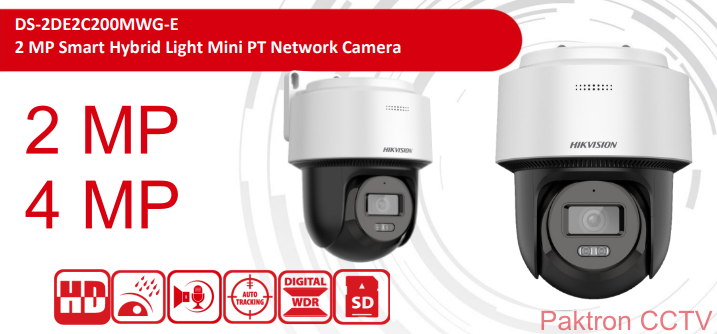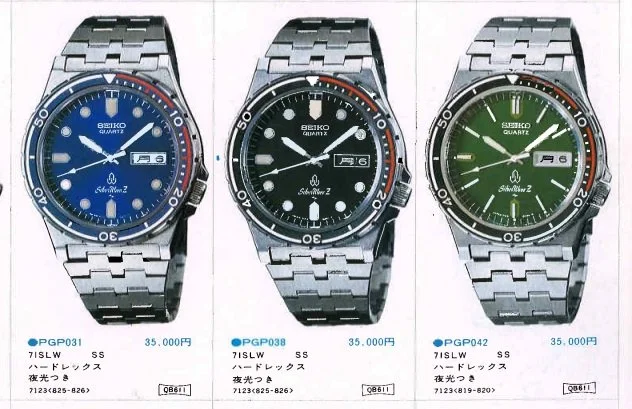Turkey is a staple in many homes, especially during the holidays, but when it comes to choosing the best turkey, Butterball is a name that stands out. Renowned for its quality and consistency, Butterball turkeys have become synonymous with great-tasting meals. Whether you’re cooking for Thanksgiving, Christmas, or any special gathering, a Butterball turkey is an excellent choice.
This article will provide a complete guide to Butterball turkey, covering its history, quality, preparation tips, cooking methods, nutritional facts, and more. Whether you’re a first-time turkey chef or an experienced cook, this guide will help you make the most of your Butterball turkey experience.
What is Butterball Turkey?
Butterball is one of the most recognized brands in the turkey industry. Known for its tender, juicy, and flavorful turkeys, Butterball has been serving home cooks since 1954. It all started when a group of turkey farmers decided to create a turkey that was easier to cook and more enjoyable to eat. Over the years, Butterball has developed a reputation for producing top-quality, premium turkeys, including whole turkeys, turkey breasts, and ground turkey.
A Butterball turkey is typically known for its moisture retention, rich flavor, and ease of preparation. These turkeys are often pre-basted, meaning they have been injected with a seasoned solution that helps maintain juiciness throughout the cooking process.
History of Butterball Turkey: A Legacy of Excellence
Butterball’s history dates back to the early 1950s, when a group of farmers in the United States sought to improve the quality of turkeys sold to consumers. In 1954, Butterball was officially established as a brand. The company’s mission was clear from the beginning: to provide high-quality turkeys that would make Thanksgiving and other holiday meals easier to prepare and more enjoyable to eat.
Over the decades, Butterball has continued to innovate, offering new products and developing convenient solutions for turkey preparation. Butterball’s commitment to quality has made it a household name, trusted by millions of families to provide a flavorful and hassle-free meal.
Why Choose Butterball Turkey?
When selecting a turkey for a special meal, many people gravitate toward Butterball for several reasons:
- Premium Quality: Butterball turkeys are carefully raised and processed to ensure the highest quality. They undergo strict quality control processes to guarantee tenderness, flavor, and juiciness.
- Pre-Basted for Juiciness: Many Butterball turkeys are pre-basted, meaning they’ve been injected with a seasoning blend that helps the turkey stay moist during cooking. This eliminates the need for additional basting, making it easier for home cooks to achieve a perfect turkey every time.
- Ease of Preparation: Butterball offers various products, including frozen and fresh turkeys, with easy-to-follow preparation instructions. This makes it a great choice for both novice cooks and experienced chefs.
- Wide Variety of Products: Whether you’re looking for a whole turkey, turkey breasts, or ground turkey, Butterball offers a range of products to meet your needs. This variety allows consumers to choose the right size and cut for their occasion.
- Availability: Butterball turkeys are widely available at grocery stores across the country, making them an easy option to find for any meal.
Types of Butterball Turkeys
Butterball offers a variety of turkey products, catering to different preferences and cooking styles. Here are some of the most popular types of Butterball turkeys:
Whole Butterball Turkeys
The classic whole Butterball turkey is perfect for large gatherings. Whether you’re preparing a Thanksgiving feast or a family dinner, a whole turkey allows for generous servings and can be cooked in a variety of ways, including roasting, smoking, or deep-frying.
Butterball Turkey Breasts
For smaller gatherings or those who prefer white meat, Butterball turkey breasts are a great option. They’re available as boneless or bone-in, and they cook more quickly than a whole turkey, making them ideal for a more convenient meal.
Butterball Ground Turkey
Ground turkey is a versatile ingredient used in many dishes, from turkey burgers to chili. Butterball’s ground turkey is made with lean meat, offering a healthy alternative to beef while still providing the same great flavor.
Butterball Frozen and Fresh Turkeys
Butterball turkeys come in both frozen and fresh varieties. While frozen turkeys must be thawed before cooking, fresh turkeys can be cooked immediately after purchase. Both options offer the same great quality, but fresh turkeys are often preferred for their convenience and ease of preparation.
How to Cook a Butterball Turkey
One of the main reasons Butterball is so popular is because of its ease of preparation. While there are many ways to cook a turkey, the most common methods are roasting, deep-frying, and smoking. Here’s a general guide for roasting a Butterball turkey, the most traditional and popular method.
Roasting a Butterball Turkey: A Step-by-Step Guide
- Thaw Your Turkey (if Frozen)
If you’re working with a frozen Butterball turkey, you’ll need to allow plenty of time for it to thaw. A general rule of thumb is to thaw the turkey in the refrigerator for 24 hours for every 4-5 pounds of turkey. For example, a 12-pound turkey will require about 3 days to thaw completely. - Preheat the Oven
Preheat your oven to 325°F (165°C). This temperature is ideal for slow roasting and helps ensure your turkey cooks evenly. - Prepare the Turkey
Remove the giblets and neck from the cavity of the turkey. Pat the turkey dry with paper towels to remove any excess moisture. This will help the skin become crispy during cooking. - Season the Turkey
Season your Butterball turkey with your favorite herbs and spices. You can use a simple combination of salt, pepper, garlic powder, and rosemary, or get creative with your seasoning. Be sure to season the inside of the cavity as well. - Stuff the Turkey (Optional)
If you want to stuff your turkey, now is the time. Remember not to overstuff it, as this can affect the turkey’s cooking time. If you prefer not to stuff the turkey, you can place some aromatic vegetables, such as onions and carrots, inside the cavity for added flavor. - Roast the Turkey
Place the turkey breast-side up on a roasting rack in a shallow roasting pan. Insert a meat thermometer into the thickest part of the thigh without touching the bone. This will help you monitor the turkey’s internal temperature.Roast the turkey for approximately 13 minutes per pound. For example, a 16-pound turkey will need about 3.5 hours to cook.
- Check for Doneness
The turkey is done when the internal temperature reaches 165°F (75°C) in the thigh. Once the turkey reaches the correct temperature, remove it from the oven and let it rest for 20-30 minutes before carving. - Carve and Serve
After resting, carve the turkey and serve with your favorite sides. Be sure to save the bones for making turkey stock!
Deep Frying a Butterball Turkey
Deep frying a turkey is another popular cooking method, known for creating a crispy skin and juicy meat. While deep-frying can be dangerous if not done properly, with the right precautions, it can be a fantastic way to prepare a Butterball turkey.
How to Deep Fry a Butterball Turkey
- Set Up a Safe Frying Station
Choose an outdoor location to deep fry your turkey. Make sure it’s away from any structures or flammable materials. Always use a fryer designed for turkeys. - Prepare the Turkey
Pat the turkey dry and remove the giblets. Make sure the turkey is completely thawed, as water can cause dangerous oil splattering. - Heat the Oil
Heat the oil in the fryer to 350°F (175°C). Use enough oil to fully submerge the turkey, but not so much that it will overflow when the turkey is added. - Lower the Turkey Slowly
Carefully lower the turkey into the hot oil using a frying basket or hook. Fry the turkey for about 3-4 minutes per pound. A 12-pound turkey will typically take 36-48 minutes to cook. - Check the Temperature
Ensure the turkey reaches an internal temperature of 165°F (75°C). Remove the turkey carefully and let it rest before carving.
Cooking a Butterball Turkey in a Smoker
Smoking a turkey is another excellent way to prepare Butterball, giving it a rich, smoky flavor. If you have a smoker, this method is worth trying.
How to Smoke a Butterball Turkey
- Prepare the Smoker
Preheat your smoker to 225°F (107°C). Add wood chips or chunks to create the smoke. - Season the Turkey
Season your Butterball turkey as desired. You can use a simple rub or brine the turkey for added moisture and flavor. - Place the Turkey in the Smoker
Place the turkey breast-side up in the smoker and cook for about 30-40 minutes per pound. You can place a meat thermometer in the thickest part of the thigh to monitor the internal temperature. - Finish and Serve
When the turkey reaches an internal temperature of 165°F (75°C), remove it from the smoker and let it rest before carving.
Butterball Turkey Nutrition Facts
Understanding the nutritional content of your Butterball turkey can help you make healthier meal choices. Here’s a general breakdown of the nutrition found in a 3-ounce serving of roasted Butterball turkey breast:
- Calories: 125
- Protein: 26g
- Fat: 1g
- Carbohydrates: 0g
- Sodium: 50mg
- Cholesterol: 50mg
Butterball turkeys are a great source of lean protein and can be a healthy addition to your meals. However, be mindful of the sodium content, especially if you opt for a pre-basted turkey.
Conclusion: The Perfect Turkey for Every Occasion
Butterball turkey is the perfect choice for any occasion, whether it’s a festive family meal or a casual weeknight dinner. With its rich flavor, tender meat, and ease of preparation, Butterball has earned its reputation as a top-tier turkey brand.
Now that you know all about Butterball turkey, from its history and varieties to cooking tips and nutritional information, you can confidently select the perfect turkey for your next meal. Whether you roast, deep-fry, or smoke it, Butterball will deliver a delicious, memorable meal every time.



